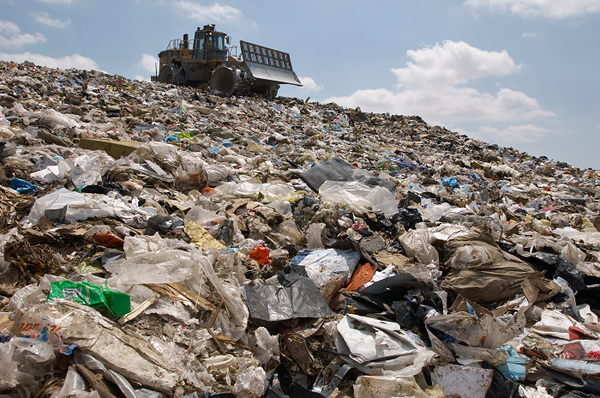Pollution is one of the biggest threats to the environment and to health of all life on Earth. Exposure to contaminated air, water and soil kill more people than obesity, alcohol and traffic accidents; these pollutants kill three times as many people as AIDS, tuberculosis and malaria combined. The greatest problem is air pollution, which causes nearly 1 in 10 premature deaths globally. These facts are worrying, to say the least. Better waste management is crucial for creating a more sustainable and healthy society. Recycling has a very important role in that process, because it both reduces the amount of waste and saves a considerable amount of resources needed for manufacturing new products. To understand the full extent of this situation, we first need to look into the biggest sources of pollution.
Who are the biggest polluters?
This question isn’t an easy one, as there are so many industries that contribute to global pollution in different ways.
1. Emissions from industrial plants and manufacturing activities take the first place, especially industries like tanneries, lead smelting, mining and ore processing, as well as chemical and product manufacturing. Many of these industries process raw materials to get the final product, which includes the use of various toxic chemicals that contain elements like cadmium, lead, mercury, and chromium. These pollutants can end up in underground waters and soil, contaminating the water we drink and the food we eat. Byproducts of such production processes also include emissions of various gases that contribute to the greenhouse effect and air pollution, like carbon dioxide, carbon monoxide, and sulfur dioxide.

2. Fossil fuel combustion is the leading cause of smog clouds and bad air quality in cities. This includes both power plants that use fossil fuels to generate heat and emissions from cars and other vehicles. As a result of the combustion, carbon monoxide, nitrogen oxides, lead, dust particles, and volatile organic compounds are released into the air, creating smog clouds that plague many major cities in the world. Motor vehicles cause 75% of carbon monoxide pollution in the US, while transportation in general causes 14% of greenhouse gas emissions globally. Burning charcoal and wood to generate heat also results in carbon monoxide, carbon dioxide and dust particle emissions. This is a great problem in low-income countries, where most of the energy generated for heating is acquired by burning coal.
3. Agriculture is also a significant contributor when it comes to pollution. Both crop cultivation and livestock contribute to pollution and greenhouse gas emissions. The use of pesticides and fertilizers is considered a must in almost every plant production, bigger or smaller. If not used properly, which happens more often than it should, these chemicals can contaminate soils, underground waters and kill certain beneficial species, thus disrupting and impoverishing entire ecosystems. Raising cattle for food emits 14,5% of all greenhouse gas emissions, significantly contributing to increasing methane levels in the atmosphere.
4. Last, but not least, we ourselves are also contributing to both local and global pollution with improper waste management and overuse of plastic. Every day landfills get new loads of waste that are just being buried into the ground. The idea behind landfills is to put waste beneath the ground to decompose, but the thing is, the majority of the waste that ends up in them won’t decompose by itself for the next couple of centuries. Besides being very primitive in regard to waste management, landfills are also big sources of pollution. If the decomposing waste leaches into groundwater streams it may potentially contaminate sources of fresh, drinkable water. Landfills also emit gases like methane as a byproduct of the decomposition of organic matter. Methane is a well-known greenhouse gas, 30 times more potent than carbon dioxide when it comes to trapping heat.

If we do not start to think and act more sustainably, we will pollute our environment to the point of no return, run out of clean water and healthy soil for growing our food. But how to resolve this issue? Advances in technology are helping us to remove the need for fossil fuels in transportation; the development of safety measures and strict procedures in chemical, manufacturing and other industries are also starting to change the situation for the better. But what about landfills all over the world that are getting fuller each day? One part of the answer is to reduce the amount of waste we produce and to reuse as much as possible. The other part of the answer is just to do what Mother Nature has done for millennia – to recycle.
How does recycling help?
While recycling cannot help to solve the issues with fossil fuel combustion and pollution in agriculture, it can significantly help to mitigate the problem with mining, industrial plants, manufacturing activities and household waste. Plastic production and mining activities include extraction and processing of raw materials like oil, aluminum, lead, copper and other metals. This causes very serious pollution of the entire environment – air, soil and water.
That pollution can be significantly reduced with recycling, especially when it comes to metals, as they do not lose quality over time and can be recycled a great number of times. Increasing recycling rates decreases the need for raw materials and removes a big part of processing from the equation. For example, using recycled aluminum saves more than 90% of the energy required for producing aluminum from raw materials. A similar story goes with plastics; using recycled plastic removes 60% percent of the cost for the new bottle. Considering that recycling saves energy and water, it also decreases pollution indirectly, by reducing the amount of contaminated water and pollutants generated during energy production.

Besides reducing the need to drain Earth’s natural resources, recycling can also keep a significant amount of waste away from landfills. Currently, whooping 79% of total plastic waste ends up in landfills, while only 9% gets recycled. A considerable part of that waste includes single-use plastic bottles and packaging, which are mostly made of recyclable plastics like PET and HDPE. Increasing plastic recycling rates will remove a lot of plastic from our environment, most importantly from the oceans, and reduce the costs of manufacturing new products, saving Earth’s natural resources.